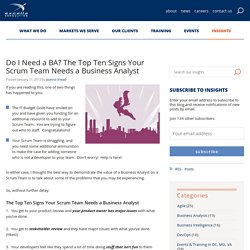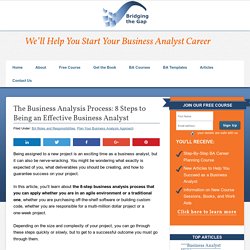

Karl Wiegers Describes 10 Requirements Traps to Avoid. Karl Wiegers Describes 10 Requirements Traps to Avoid Karl E.

Wiegers Process Impact www.processimpact.com The path to quality software begins with excellent requirements. Be aware, though, that none of these solutions will work if you’re dealing with unreasonable people who are convinced that writing requirements is time-wasting bureaucratic overhead. Trap #1: Confusion Over "Requirements" Symptoms: Even the simple word "requirements" means different things to different people.
Another symptom is that the users provide "the requirements," but developers still aren’t sure what they’re supposed to build. Solutions: The first step is to recognize that there are several types of requirements, all legitimate and all necessary. I think in terms of three levels of requirements, all of which must be addressed during requirements development (Figure 1). The second level addresses the user requirements, which describe the tasks that users must be able to perform using the new product. Figure 1. If You Think You Can Do Without a Business Analyst ÉThink Again! In this article, we will introduce you to how the Business Analysis (BA) discipline can contribute to strategic, project and organizational success.

In other words, how does Business Analysis add value to the organization? Do we need a Business Analyst on an agile team? Out of many roles on an Agile team - developer, tester, project manager or product manager, the role of the business analyst is probably the one whose “existence” on the team is most frequently challenged.

The role of a BA is often questioned, not the quality of work, but the “perceived” value delivered for the team - by clients. Frankly I’ve had a few identity crisis since I started working as an analyst on agile teams in 2006. So what does the Agile Analyst bring to the team? I’ve noticed that when a project shined with an analyst, two of the biggest benefits to the development teams have been: Everyone on the team (including the customer) understands (and questions) the 'Why' Many seem to blindly believe that the business analysts' sole responsibility is to "write" stories.
At the end of the day, the title doesn't really matter. Hone your Agile Analyst skills. Do I Need a BA? The Top Ten Signs Your Scrum Team Needs a Business Analyst. If you are reading this, one of two things has happened to you: The IT Budget Gods have smiled on you and have given you funding for an additional resource to add to your Scrum Team.

You are trying to figure out who to staff. Congratulations! Your Scrum Team is struggling, and you need some additional ammunition to make the case for adding someone who is not a developer to your team. Don’t worry! In either case, I thought the best way to demonstrate the value of a Business Analyst on a Scrum Team is to talk about some of the problems that you may be experiencing. So, without further delay: The Top Ten Signs Your Scrum Team Needs a Business Analyst 1. 2. 3. 4. 5. 6. 7. 8. 9. 10. If one or more of these are true, you might need a Business Analyst. Have you experienced other Agile/Scrum software delivery problems that a Business Analyst was able to help solve? Gérez votre carrière en ligne en Suisse. The Business Analysis Process: 8 Steps to Being an Effective Business Analyst. Being assigned to a new project is an exciting time as a business analyst, but it can also be nerve-wracking.

You might be wondering what exactly is expected of you, what deliverables you should be creating, and how to guarantee success on your project. In this article, you’ll learn about the 8-step business analysis process that you can apply whether you are in an agile environment or a traditional one, whether you are purchasing off-the-shelf software or building custom code, whether you are responsible for a multi-million dollar project or a one-week project. Depending on the size and complexity of your project, you can go through these steps quickly or slowly, but to get to a successful outcome you must go through them. (We cover each of the 8 steps in even more detail in our BA Essentials Master Class – in fact, each step gets an entire lesson in this virtual, self-study course.) Now let’s look at each of the 8 steps in more detail. Step 1 – Get Oriented Step 3 – Define Scope. +AUDIO Selling Business Analysis Internally.